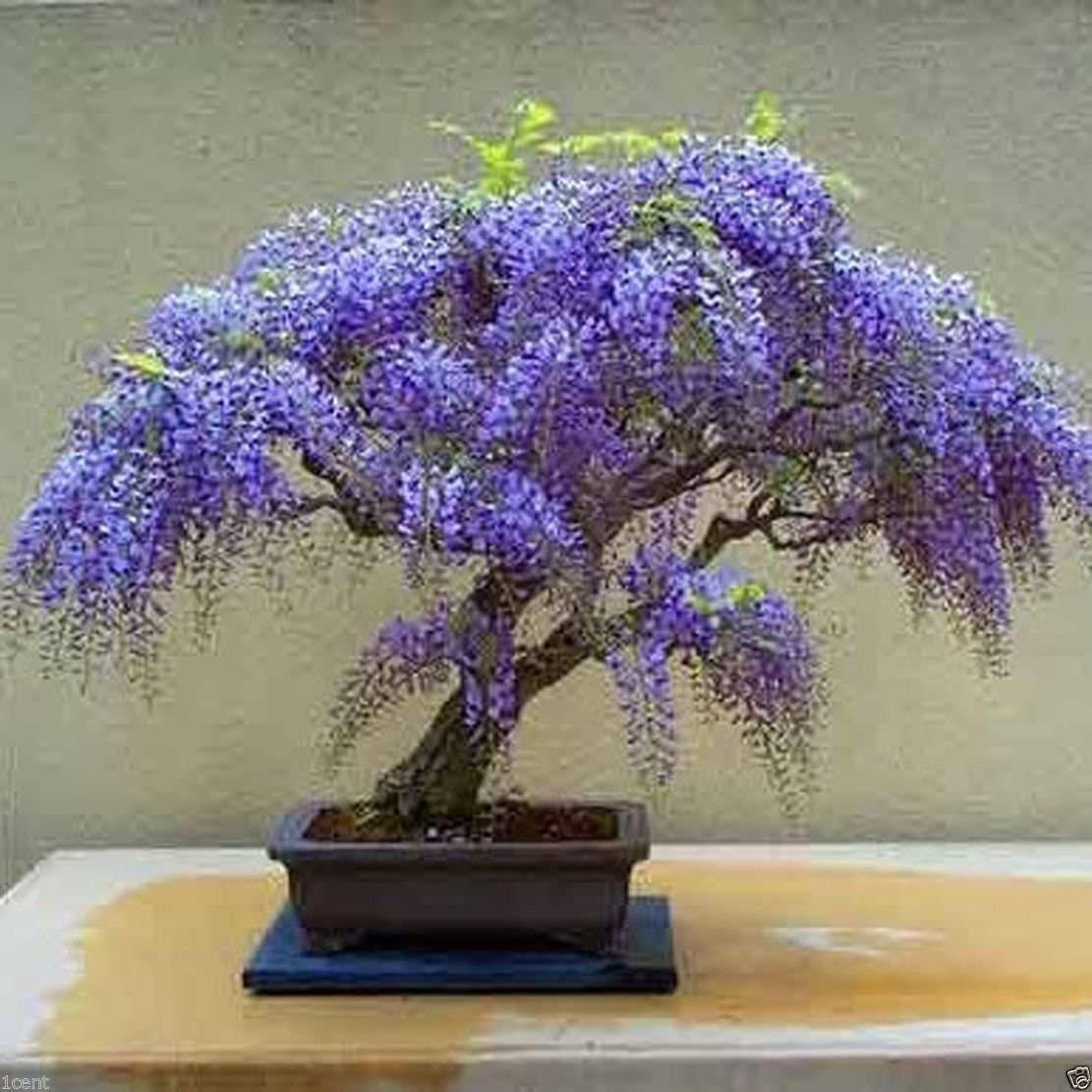The Chinese Wisteria Bonsai Tree is famous for its stunning beauty. This tree has cascading flowers in vibrant colors. It is a favorite among bonsai enthusiasts and gardeners.
What is a Chinese Wisteria Bonsai Tree?
The Chinese Wisteria Bonsai is a miniaturized version of the Wisteria tree. This tree is native to China. It belongs to the Fabaceae family. The tree has beautiful, fragrant flowers. These flowers hang in clusters. They come in shades of blue, purple, white, and pink.
History of the Chinese Wisteria Bonsai Tree
Wisteria has a long history in Chinese culture. It symbolizes romance and love. The art of bonsai also has ancient roots. Combining Wisteria with bonsai creates a unique and beautiful plant. This plant is both an art form and a living sculpture.
How to Grow a Chinese Wisteria Bonsai Tree
Growing a Chinese Wisteria Bonsai is a rewarding experience. Here is a step-by-step guide to help you grow your own.
Step 1: Choose The Right Plant
- Start with a healthy Wisteria plant.
- Look for a plant with strong roots and stems.
Step 2: Select A Suitable Pot
- Choose a pot with good drainage.
- The pot should be large enough for the roots to grow.
Step 3: Prepare The Soil
- Use well-draining soil.
- A mix of loam, peat, and sand works well.
Step 4: Planting The Bonsai
- Place the plant in the pot.
- Fill the pot with soil, covering the roots.
- Water the plant thoroughly.
Step 5: Pruning And Shaping
- Prune the tree to maintain its shape.
- Remove dead or unwanted branches.
- Use wire to shape the branches if needed.
Step 6: Watering And Feeding
- Water the bonsai regularly.
- Do not let the soil dry out completely.
- Fertilize the plant every 2-4 weeks during the growing season.
Step 7: Repotting
- Repot the bonsai every 2-3 years.
- This helps to refresh the soil and promote growth.

Credit: www.bonsaiempire.com
Caring for Your Chinese Wisteria Bonsai Tree
Proper care is essential for a healthy and beautiful bonsai. Here are some tips to help you care for your Chinese Wisteria Bonsai.
Light
Wisteria bonsai needs plenty of sunlight. Place it in a spot with at least 6 hours of direct sunlight daily.
Watering
Water the bonsai when the topsoil feels dry. Avoid overwatering, as it can cause root rot.
Fertilizing
Use a balanced fertilizer during the growing season. This helps the plant to produce beautiful flowers.
Pruning
Regular pruning keeps the tree in shape. It also encourages new growth and flowering.
Repotting
Repot the bonsai every few years. This refreshes the soil and provides more space for the roots.
Common Problems and Solutions
Like all plants, Chinese Wisteria Bonsai can face problems. Here are some common issues and how to solve them.
Yellow Leaves
Yellow leaves can be a sign of overwatering. Reduce the watering frequency. Ensure the pot has good drainage.
Poor Flowering
If the bonsai is not flowering, it may need more sunlight. Place it in a sunnier location. Fertilize it regularly during the growing season.
Pests
Wisteria bonsai can attract pests like aphids and spider mites. Use insecticidal soap or neem oil to treat pest infestations.
Benefits of Growing a Chinese Wisteria Bonsai Tree
Growing a Chinese Wisteria Bonsai has many benefits. Here are some reasons to consider adding one to your collection.
Beauty
Chinese Wisteria Bonsai trees are stunning. Their cascading flowers add beauty to any space.
Fragrance
The flowers of the Wisteria bonsai are fragrant. They fill the air with a pleasant aroma.
Relaxation
Caring for a bonsai tree is a relaxing hobby. It helps reduce stress and promotes mindfulness.
Learning
Growing a bonsai teaches patience and gardening skills. It is a rewarding experience for both beginners and experts.
Conclusion
The Chinese Wisteria Bonsai Tree is a beautiful and rewarding plant to grow. With proper care, it can thrive and bring joy to your home. Follow the steps and tips in this guide to grow your own Chinese Wisteria Bonsai. Enjoy the beauty and fragrance of this amazing tree!


